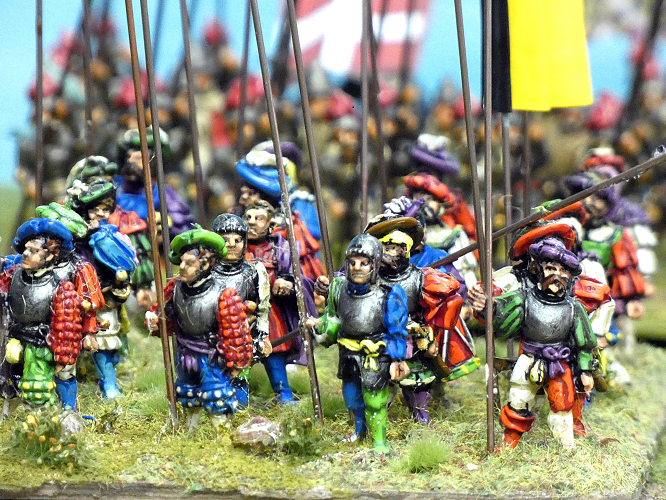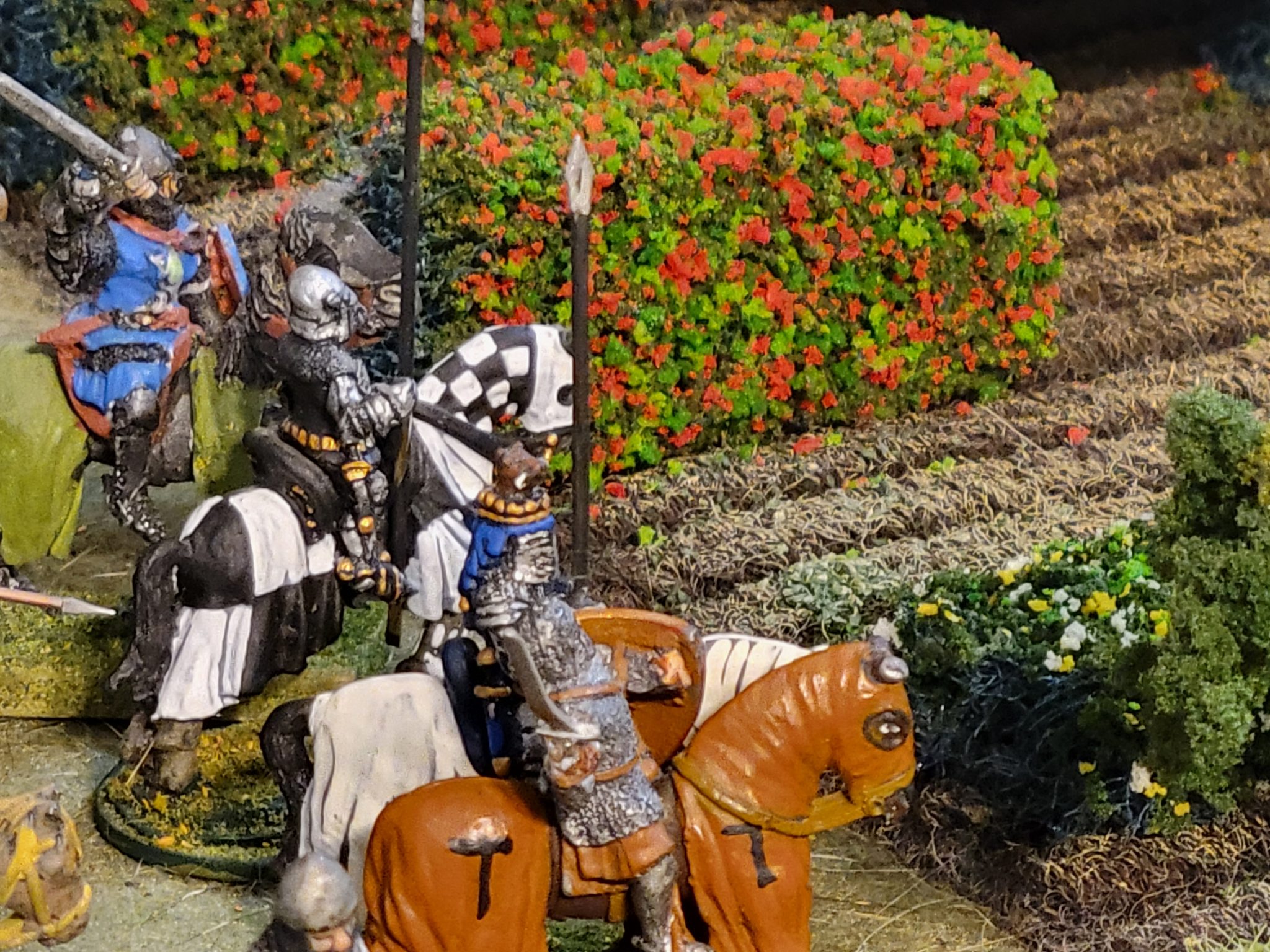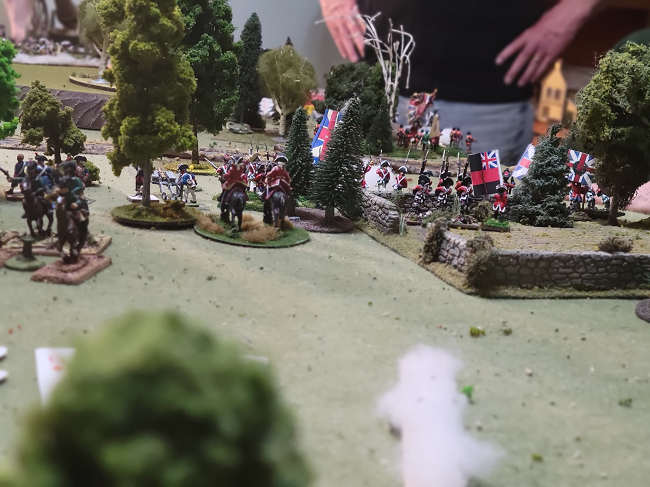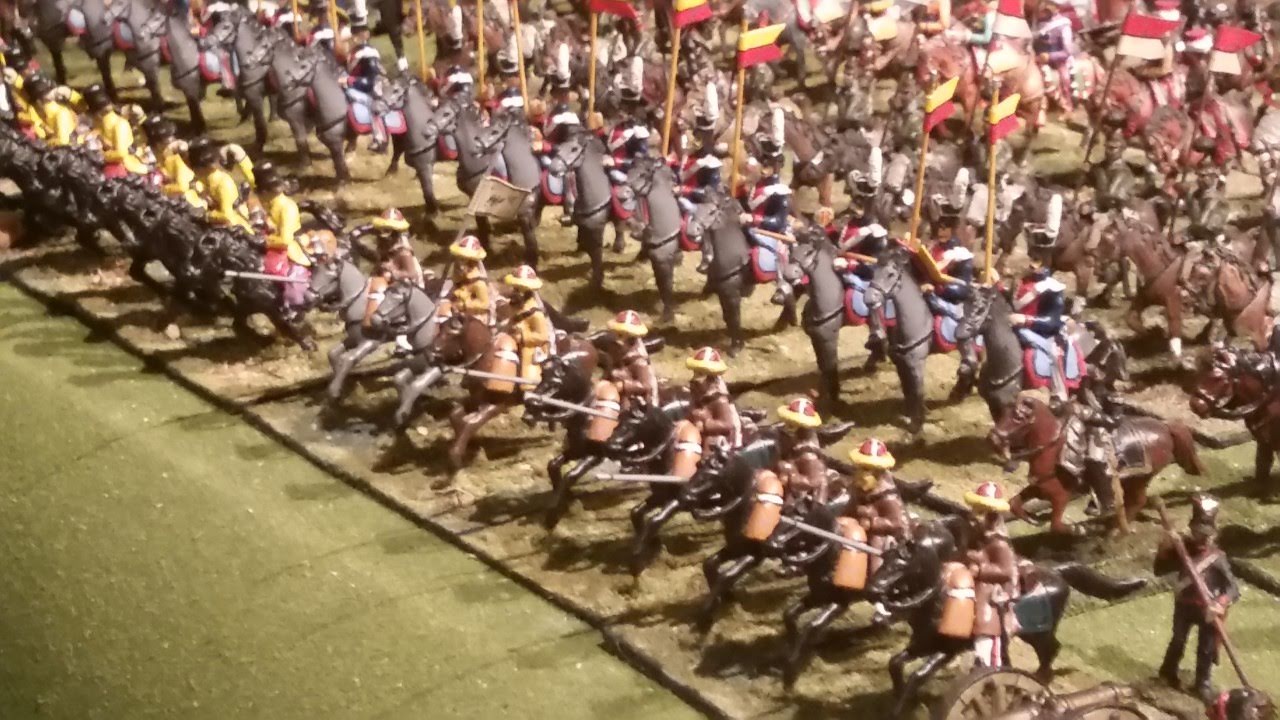Renaissance wargaming focuses on warfare and conflicts that occurred during the Renaissance period, approximatley from the 14th to the 17th century. This period is known for its cultural, artistic, and scientific advancements, as well as significant military developments. Renaissance wargaming allows players to delve into the strategies, tactics, and battles of this transformative era.
Renaissance wargaming covers a broad span of time, including the late Middle Ages, the Italian Wars, the Wars of Religion, and the Thirty Years’ War and English Civil War. Each sub-period offers unique historical events, armies, and military technologies for players to explore.
Renaissance wargaming is characterized by the widespread use of pike and shot formations, it is often referred to as Pike and Shot wargaming. Pike formations, composed of soldiers armed with long spears (pikes), formed the backbone of infantry forces, while shot formations employed firearms, including muskets and arquebuses. The combination of pike and shot tactics revolutionized battlefield strategies.
Renaissance wargaming reflects the increased importance of gunpowder in warfare. Firearms such as muskets, cannons, and artillery played a significant role on the battlefield. Players must consider the effectiveness of firearms, reloading times, and the impact of artillery in their strategies.
Renaissance armies often relied heavily on mercenaries and condottieri, professional soldiers for hire, who fought on behalf of different city-states, kingdoms, or nobles, most often based on who was willing to pay more. War gaming in this period allows players to command and hire these diverse units, including Swiss pikemen, Landsknechts, and other specialized mercenary groups.
This period of wargaming incorporates rules for artillery and siege warfare, reflecting the development of powerful cannons and the strategic significance of fortifications. Players must consider the tactical challenges of besieging or defending fortified positions, using cannons and siege engines to breach walls or repel attackers.
Renaissance wargaming often includes rules for naval battles and maritime conflicts of the period. Players can engage in naval warfare using galleys, carracks, and other sailing vessels, simulating famous naval encounters such as the Battle of Lepanto or the English defeat of the Spanish Armada.
Wargames in this period feature a variety of historical factions, including city-states like Florence, Venice, and Genoa, as well as larger European powers such as Spain, France, England, and the Holy Roman Empire. Players can command armies led by historical figures such as Charles V, Henry VIII, Francis I, or Ferdinand II.
Like all other time periods Renaissance wargaming often provides historical scenarios and campaigns that allow players to reenact famous battles or military campaigns. These scenarios offer a chance to recreate pivotal moments such as the Battle of Agincourt, the Siege of Vienna, or the Wars of Italian Unification.
The Renaissance offers a fascinating blend of medieval traditions and early modern innovations, providing a strategic and immersive experience. The period is characterized by significant military and technological advancements, making it an exciting era to explore on the tabletop. From pike and shot formations to the grandeur of Renaissance warfare, this genre provides plenty of opportunities for historical reenactment and strategic game play.
Shop Amazon for: Renaissance Wargaming
Who Makes Renaissance Wargaming Miniatures? | Rules for Renaissance Wargaming
Renaissance Wargames
Back to: Historical Wargaming Time Periods




